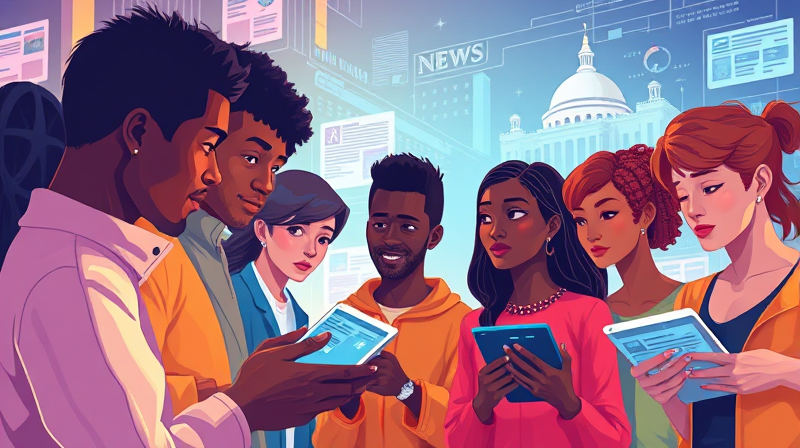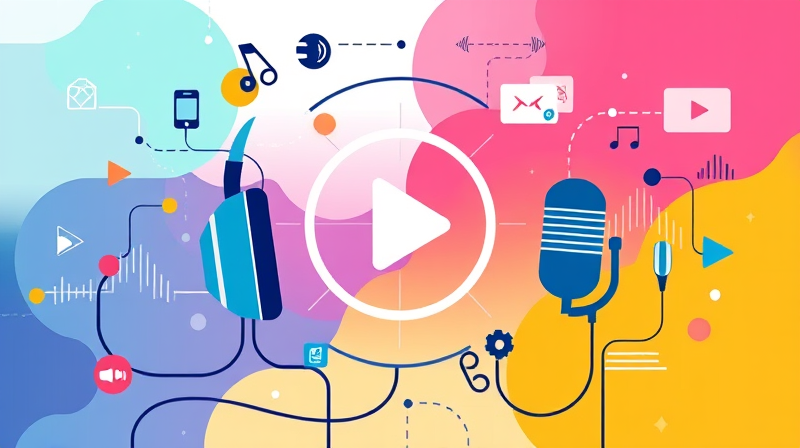Staying informed about government policies and civic issues is crucial in today’s fast-paced world. For many, accessing and interpreting government-related news can be overwhelming. With modern tools and thoughtful design, however, everyone has the opportunity to engage with public discourse. This article explores actionable strategies and technological advances that help remove barriers in understanding government affairs.
Many individuals face challenges that prevent them from enjoying the full spectrum of news media. For example, media bias often distorts perspectives, and many readers find it difficult to distinguish fact from opinion. Moreover, accessibility issues for people with disabilities can create significant hurdles in consuming public information. Each of these challenges demands innovative solutions.
Innovative Tools for Inclusive News Consumption
Assistive technology has revolutionized the way people with visual impairments and print disabilities access news content. Specialized services and adaptive tools allow many to overcome traditional barriers. For instance, applications such as Microsoft Immersive Reader and Google Reading Mode simplify web pages by removing distracting elements. This transformation helps readers focus solely on the content, making it easier to understand the nuances of government news.
Moreover, technologies like text-to-speech convert written articles into spoken words, which is a boon for individuals who prefer listening over reading. Services such as NFB Newsline provide Braille and audio formats, thus casting a wider net of inclusivity over government-related content. These innovations transform inaccessible text into user-friendly information that many can appreciate, regardless of their sensory abilities.
Apps like Newsela take inclusivity further by offering multiple reading levels. This allows users to choose the complexity that best suits their current knowledge and reading preference, ensuring that diverse audiences are catered for optimally.
Similarly, popular platforms also integrate accessibility features. For example, Apple News and Flipboard are designed to offer bold, large-print options and seamless integration with screen readers. These platforms are optimized to reduce visual strain and improve navigation for all users, particularly those with disabilities.
In addition, several newspapers provide dedicated accessibility modes. These modes include streamlined layouts designed for efficiency when using screen readers. To ensure no one is left behind, radio reading services broadcast narrated news, making it possible to stay informed even without access to digital screens.
Government-related news consumption is further enhanced by adhering to federal standards. Web Content Accessibility Guidelines (WCAG) and Section 508 focus on ensuring digital content is accessible to everyone. These standards advocate for features such as closed captioning, scalable content, and descriptive multimedia tags – all of which are essential in making news platforms universally accessible.
These tools not only support accessibility but also aid in navigating media biases. Today, exploring the methods news outlets use to present information critically is more important than ever. Research indicates that word choices and subtle framing techniques can influence perceptions and opinions. For example, while some organizations use the term "abortion rights," others choose the less evocative term "abortion law." Awareness of these linguistic nuances empowers readers to evaluate news critically.
A study from the University of Rochester has shown that recognizing these differences is key to forming a balanced view of current events. In addition to understanding framing techniques, readers are encouraged to differentiate between fact and opinion. Factors such as political awareness and trust in established news organizations can greatly impact one’s ability to distinguish between the two.
For those seeking to bolster their media literacy, a few practical steps can be taken:
- Evaluate multiple sources – Cross-referencing news from different outlets helps identify biases.
- Use fact-checking tools – Reliable fact-checking websites are an essential resource for verifying information.
- Develop an analytical mindset – Consistently questioning headlines, data, and interpretations facilitates better discernment between fact and opinion.
Moreover, in addressing the challenges of disinformation, media literacy must be a priority in modern society. Disinformation spreads easily in the digital age, making it necessary for governments and news platforms alike to implement content labeling and transparency measures. This not only diminishes the impact of false narratives but also promotes an ecosystem where verified information becomes the norm.
Ultimately, engaging with government-related news should be an empowering experience. By leveraging advanced tools that cater to all readers, regardless of physical or cognitive differences, media can be democratized. When users are equipped with the right technology and strategies, the complexities of news can be broken down into accessible, comprehensible parts.
The transformation is real – with accessible design and innovative digital tools, government-related news is becoming an arena where every citizen can participate. News platforms and policymakers must continue to work together to build systems that are both accessible and transparent. Only then will every individual be able to enjoy the full benefits of staying informed about important civic matters.
This inclusive approach not only improves understanding but also inspires engagement. The future of news depends on our ability to create and maintain platforms that transcend traditional barriers. Let technology act as an equalizer and help democratize the process of news consumption for a more informed and empowered society.
In conclusion, accessibility and inclusivity in news are essential for a robust democracy. By using modern assistive devices, understanding media bias, and promoting inclusive design, readers have more ways than ever to navigate the sometimes complex realm of government news. This renewed commitment to accessible news empowers citizens to make informed decisions and participate fully in democratic life, ensuring that every voice is heard and every mind is enlightened.








